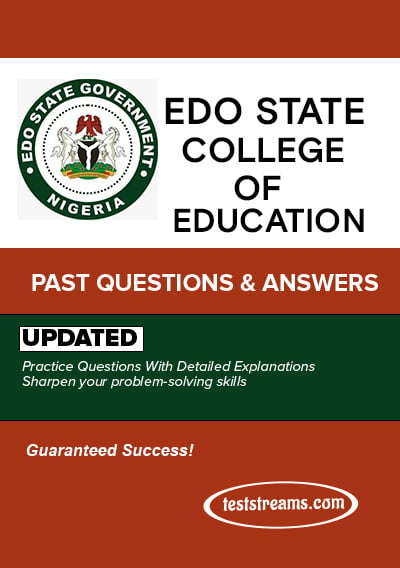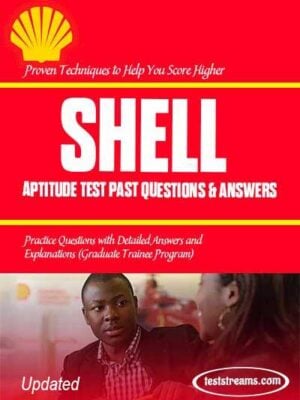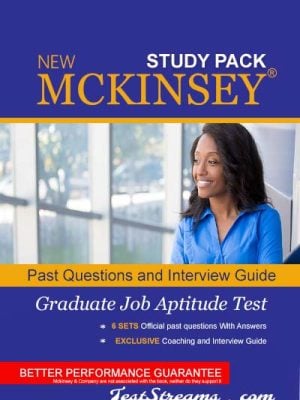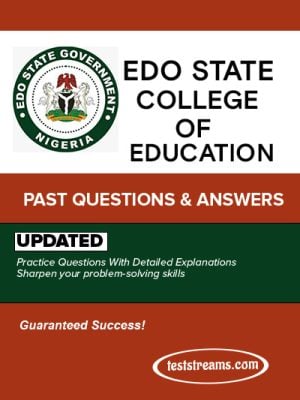Description

Edo State College of Education Past Questions and Answers – Updated
Are you preparing for an exam or admission at Edo State College of Education? One of the best ways to prepare is by practicing past questions and answers. This helps you understand the types of questions to expect, the exam format, and how to manage your time during the test. Here, we?ll discuss why using past questions is important and how they can help you succeed.
Why Use Past Questions and Answers?
- Understand the Exam Pattern: Past questions show you what kind of questions are usually asked. This gives you an idea of what to expect and how to approach them.
- Identify Key Topics: Reviewing past questions can help you identify which subjects or topics are often covered in exams. This lets you focus your study on what matters most.
- Boost Confidence: Practicing with past questions helps you get comfortable with the exam format. This can make you feel more confident on the actual test day.
- Improve Time Management: Practicing past questions helps you learn how to manage your time better during the exam, ensuring that you complete all questions.
How to Use Past Questions Effectively
- Create a Study Schedule: Plan a study schedule that includes time for practicing past questions. This will help you cover all the topics you need and keep your study organized.
- Answer Like It?s the Real Exam: Try to answer past questions as if you are sitting for the real exam. This helps you practice the pressure and time management skills you?ll need.
- Review Your Answers: After answering past questions, go over them to see which areas you need to improve. This helps you understand your strengths and weaknesses.
- Seek Help if Needed: If you find any question difficult, don?t hesitate to ask for help from your teachers or peers. Discussing difficult questions can help you learn better.
Exam format:?
1. Lecturing / Teaching profession questions
2. Test of ICT Knowledge
3. Administrative questions
4. Quantitative reasoning
5. Verbal reasoning
6. Pure mathematics
7. English language
Free Sample Edo State College of Education questions and answers
English Language
Read the following passage and answer the seven questions that follow:
In the United States, where we have more land than people, it is not at all difficult for persons in good health to make money. In this comparatively new field there are so many avenues of success open, so many vocations which are not crowded, that any person of either sex who is willing, at least for the time being, to engage in any respectable occupation that offers, may find lucrative employment.
Those who really desire to attain an independence, have only to set their minds upon it, and adopt the proper means, as they do in regard to any other object which they wish to accomplish, and the thing is easily done. But however easy it may be found to make money, I have no doubt many of my hearers will agree it is the most difficult thing in the world to keep it. The road to wealth is, as Dr. Franklin truly says, “as plain as the road to the mill.” It consists simply in expending less than we earn; that seems to be a very simple problem. Mr. Micawber, one of those happy creations of the genial Dickens, puts the case in a strong light when he says that to have annual income of twenty pounds per annum, and spend twenty pounds and sixpence, is to be the most miserable of men; whereas, to have an income of only twenty pounds, and spend but nineteen pounds and sixpence is to be the happiest of mortals.
Many of my readers may say, “we understand this: this is economy, and we know economy is wealth; we know we can’t eat our cake and keep it also.” Yet I beg to say that perhaps more cases of failure arise from mistakes on this point than almost any other. The fact is, many people think they understand economy when they really do not.
1. Which of the following statements best expresses the main idea of the passage?
A. Getting a job is easier now than it ever has been before.
B. Earning money is much less difficult than managing it properly.
C. Dr. Franklin advocated getting a job in a mill.
D. Spending money is the greatest temptation in the world.
E. There is no way to predict changes in the economy.
2. What would this author’s attitude likely be to a person unable to find employment?
A. Descriptive
B. Conciliatory
C. Ingenuous
D. Incredulous
E. Exculpatory
3. According to the author, what is more difficult than making money?
A. Getting a job
B. Traveling to a mill
C. Reading Dickens
D. Understanding the economy
E. Managing money
4. Who is the most likely audience for this passage?
A. Economists
B. General readers
C. Teachers
D. Philanthropists
E. Children
5.Choose the option that best completes the gap(s).
Agbo says he is not afraid of …….?
A. anybody
B. nothing
C. nobody
D. no one
The correct answer is A.
6.Choose the option that best completes the gap(s).
One needs to exemplify or ……. the aspect of the subject being discussed.
A. supply
B. declare
C. satisfy
D. demonstrate
The correct answer is D.
7.Choose the option that best completes the gap(s).
Actually, he forgot the one to …… the job was given?
A. whom
B. who
C. whomever
D. whoever
The correct answer is A.
8.Choose the option that has the same consonant sound as the one represented by the letter(s) underlined.
Judge
A. gear
B. spinach
C. pleasure
D. camouflage
The correct answer is D.
9.Choose the option that has a different stress pattern from the other.
A. secondment
B. orients
C. orthopedic
D. photographic
The correct answer is A.
10.Choose the option that best completes the gap(s).
One needs to exemplify or ……. the aspect of the subject being discussed.
A. supply
B. declare
C. satisfy
D. demonstrate
The correct answer is D.
BIOLOGY
1.The mouth part of the housefly is adapted for
A. lapping and sponging.
B. sucking and chewing.
C. piercing and sucking.
D. chewing and lapping.
E. biting and chewing.
2.The parts used by tapeworm to fasten itself to the host’s intestine are the
A. neck and suckers
B. hooks and suckers
C. rostellum and suckers
D. young proglottis and neck
E. rostellum, hooks, and suckers.
3.C6H12O6 is __________
A. Ethyl pentanol
B. Glycerol
C. Glucose
D. Ethyne
E. Ethanol
4.Oxygen combines with hemoglobin to produce ____
A. Oxyhemoglobin
B. Deoxygenated blood
C. Oeroglobin
D. Oxyeoglobin
E. deoxygenated hemoglobin
5.The respiratory organ found in the cockroach is the __
A. Air sac
B. Trachea
C. Lung book
D. Gill
E. Fins
6.Which of the following statements is NOT true of enzymes? They
A. are proteins B.need cofactors to activate them
C. are sensitive to hydrogen ion concentration
D. are specific in their action
E. can withstand high temperatures
7.Which of the following statements is NOT true of the piliferous layer of a root? It
A. has a very thin cuticle
B. is the outermost layer of the cortex
C. may bear root hairs
D. breaks down as the root ages
E. is replaced by a cork in old roots.
8.Which of the following types of vertebrates occur in equal numbers in the rabbit, rat, and man?
A. Caudal
B. Thoracic
C. Lumbar
D. Cervical
E. Sacral
9.The parts used by tapeworm to fasten itself to the host’s intestine are the
A. neck and suckers
B. hooks and suckers
C. rostellum and suckers
D. young proglottis and neck
E. rostellum, hooks, and suckers.
10.The path taken by glucose from the ileum to the heart is
A. ileum hepatic portal vein hepatic artery vena cava heart.
B. ileum hepatic portal artery hepatic artery vena cava heart.
C. ileum hepatic portalvein vena cava heart
D. ileum hepatic vein vena cava heart.
E. ileum hepatic portal vein hepatic vein vena cava heart.











Reviews
There are no reviews yet.